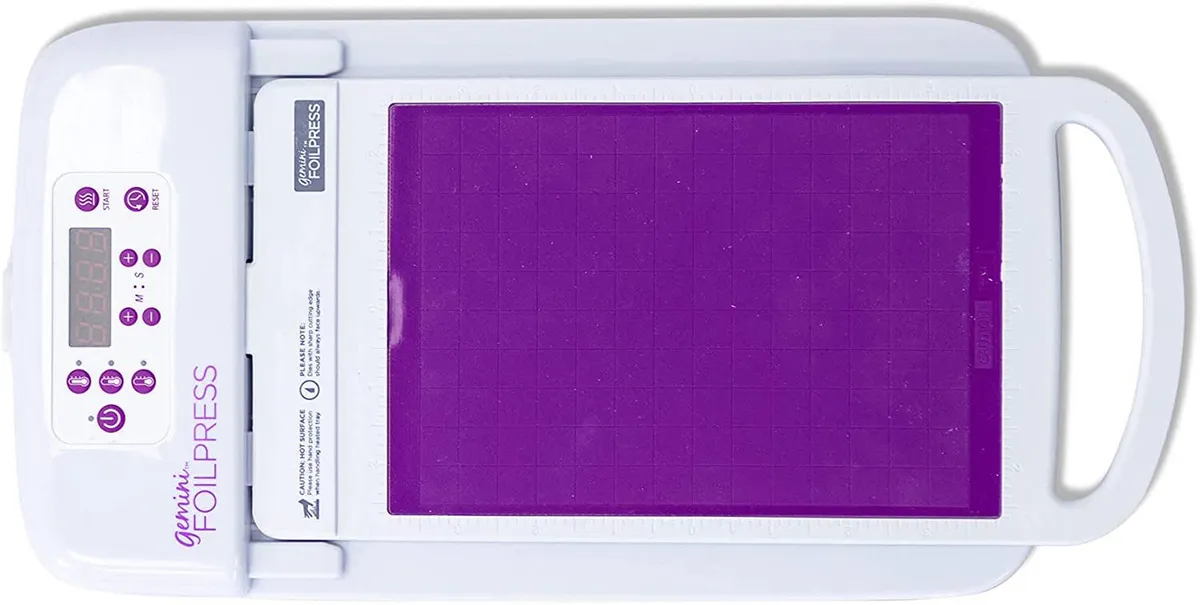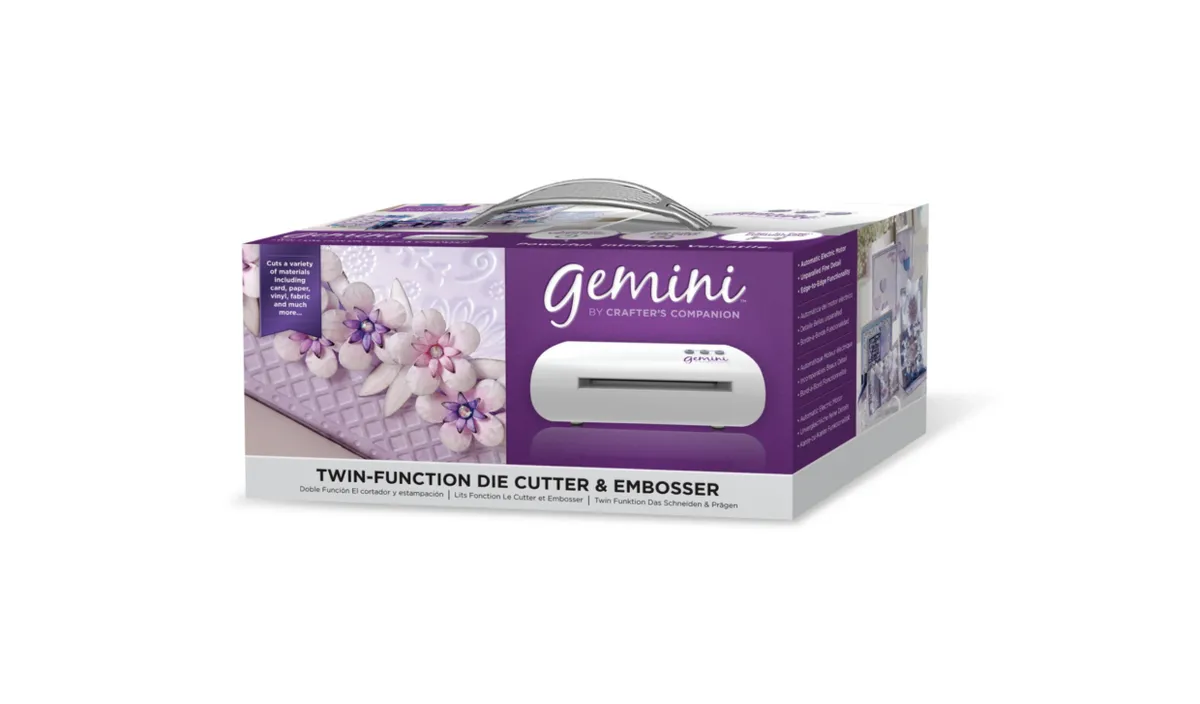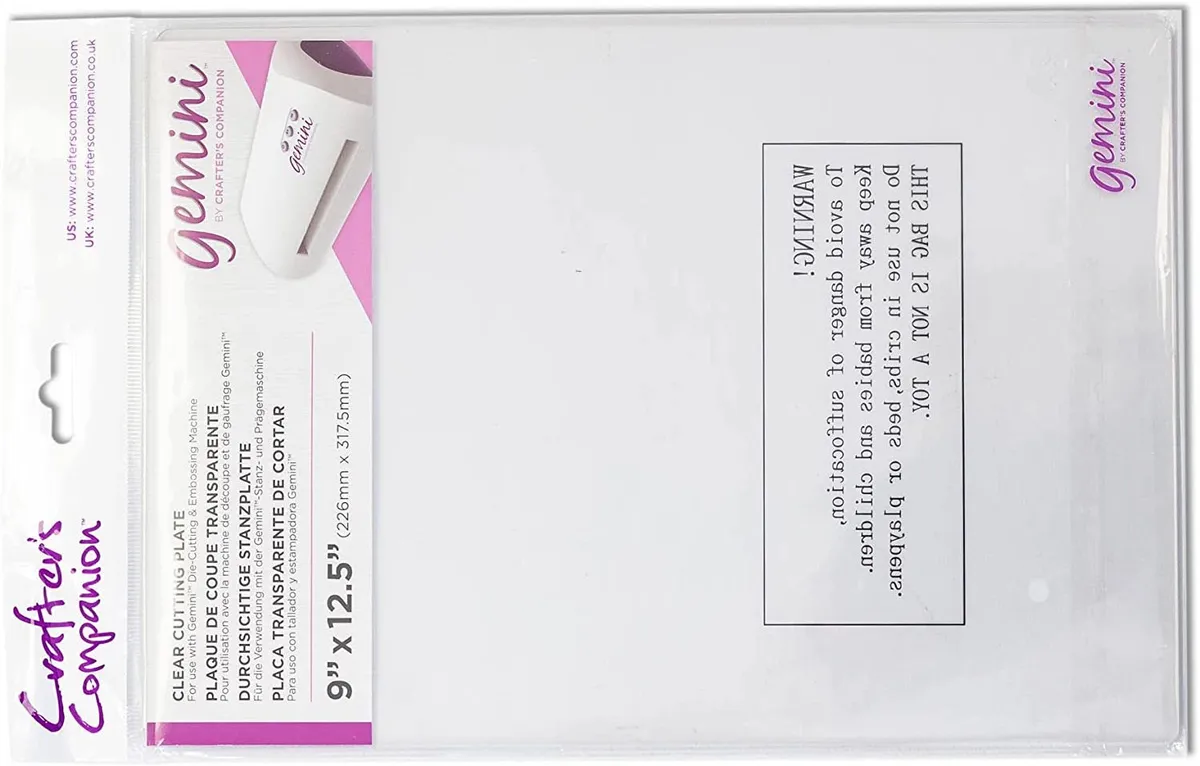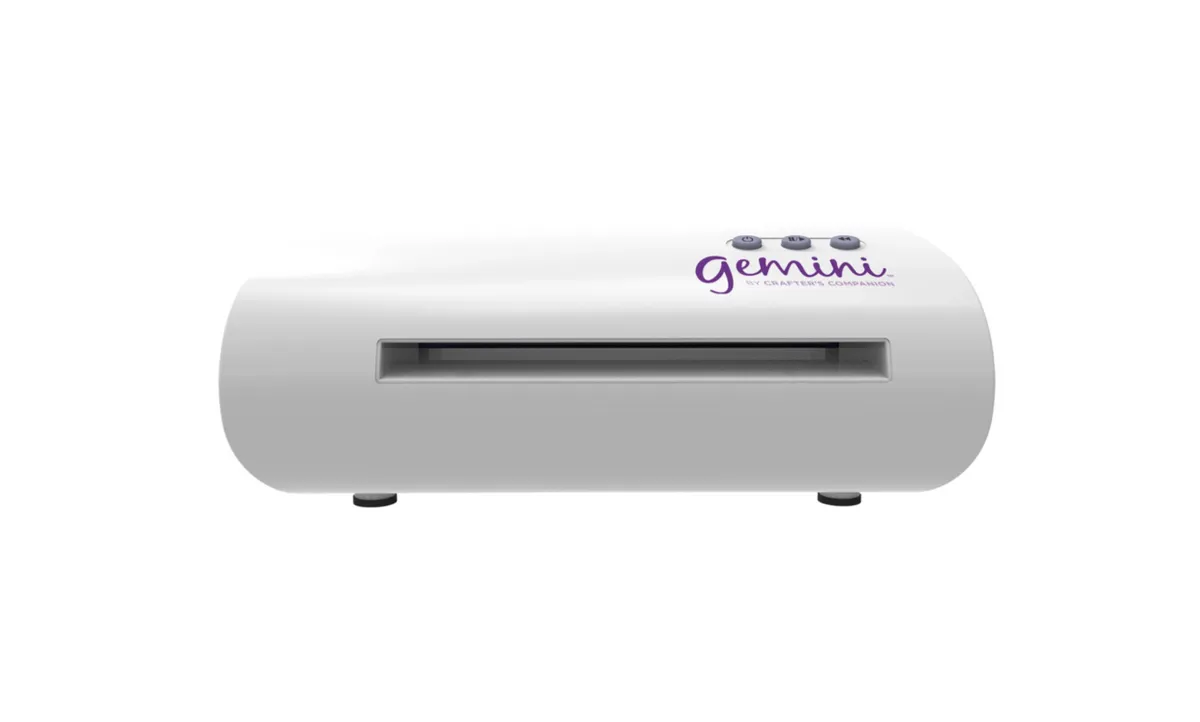Gemini die-cutting machine review
What is the Gemini die-cutting machine?
The Gemini die-cutting machine is an electric die-cutting machine from Crafter's Companion. It comes in several different sizes, the Gemini with a 9 x 12.5" aperture (A4), the Gemini Junior with a 6 x 9" aperture (A5), and the Gemini Go with a 3 x 6" aperture.
Gemini die-cutting machine functions
The Gemini is primarily a die-cutting machine, compatible with most leading thin metal dies, but it can also emboss when used with embossing folders. There are limited buttons on the machine, just three, which are pause, resume and reverse. The latter is useful if you want to reverse out smaller dies once they are cut - enabling a quicker pass.
Key features/functions:
- Electric die-cutting machine
- Fully automated
- Sleek appearance
- Low profile design
- Different colourways available for the Junior (we love the rose gold!)
- Cuts up to A4 sized dies
- Edge-to-edge cutting
- Pause function
- Reverse function
- Powerful, even pressure
- Can cut up to four layers of fabric at once
- Can cut fabric, felt, burlap, denim, paper, card, foam, vinyl, balsa wood, craft metal, leather and chipboard
- Lots of add-ons available, including the Foilpress system (we love the Foilpress here on Gathered!)
- Pass through time: 16 seconds (Gemini Junior: 10 seconds // Gemini Go: 14 seconds)
- Weighs 6.91kg

How much is the Gemini die-cutting machine?
The Gemini die-cutting machine retails around £179.99, the Gemini Junior at £139.99 and the Gemini Go at £89.99. This feels a little steep to me, given the simple functionality of the machine (although simple is not necessarily a bad thing, simple also means there is less to go wrong!). However, you're also paying for the Crafter's Companion name - and with that a lot of experience in the craft industry - and if you buy from somewhere like Amazon or The Works you can often find it for around the £125 mark - which is a really good price.
Is the Gemini die-cutting machine good value for money?
If you can pick it up for around £125, then you are getting a great machine for your money. Of course, if you're not fussed about the electric function and would prefer a manual die-cutting machine then it's probably a little on the steep side - as you can often pick up a manual machine for less than half that price.

Is the Gemini die-cutting machine easy to use?
Like most die-cutting machines, before you get to the cutting, you need to build a sandwich. Lay the base plate down first, then the cloudy plastic plate, then your die (cutting side facing up), then your paper (or card) on top of the die, and lastly the top of the sandwich - the clear plate. Once that's done, all you need to do is turn the machine on and the buttons will light up. Then, offer your sandwich up to the aperture, and the machine will take it and feed it through. The whole sandwich will come out the back of the machine, so make sure you have enough room behind it. There are no settings to fiddle with, and if you want to reverse the sandwich, then you can do that with the button on top of the machine. So, to sum up - yes, it's very easy to use!
Gemini die-cutting machine quality/durability
The outer plastic is, well, plastic, so it is prone to getting a few scuffs and scrapes if you're not careful. And the super-polished exterior means that blemishes are quite visible. However, the machine itself is of decent quality.
The downside, however, is the plates. For some reason, the Gemini cutting plates seem to warp much easier than for manual die-cutting machines (see our review of the Spellbinders Platinum 6 and the Big Shot for a comparison), so you'll find yourself replacing them quite frequently. After several months (of admittedly heavy use) it became quite difficult to even get the plates into the aperture, and they needed to be replaced. The plates also tend to crack quite easily, which is disappointing as this really is the only thing that lets this machine down. Without the plates, the machine won't work.
That said, cutting plates are easy and cheap to replace, usually coming in around the ten-pound mark (or less for the Junior). If you want to extend the life of your dies, try adjusting the pressure by adding a shim - there's a magnetic shim included in the box. Sara Davies explains how to understand pressure in this video.
I haven't tried the Gemini with off-brand cutting plates, so if anyone has - please let us know how you got on in the comments below!

How big is the Gemini die-cutting machine and how portable is it?
The Gemini has a low profile design and doesn't take up more space than it needs to. There are no platforms on either side of the aperture that needs to be accommodated, so what you see is what you get.
The Gemini measures 35.7 x 19.6 x 14.2cm and features two carrying notches on either side. I wouldn't want to keep lugging it about - it weighs 6.91kg - but for the odd craft group or for moving about your craft room, it won't cause you much trouble.
If portability is important for you, and you only need an A5 aperture, I strongly recommend you get the Gemini Junior instead. You'll save a bob or two on the cost of the machine, which you can then put towards buying goodies, such as dies or paper pads.
The Gemini Junior measures 27.1 x 19.4 x 13.8cm (4.61kg), while the Gemini Go is smaller still, measuring in at just 16.2 x 19.6 x 11.3cm (1.8kg).
Our verdict: Should you buy the Gemini die-cutting machine?
If you're looking for an electric die-cutting machine, and don't mind replacing warped plates, then the Gemini is a pretty solid machine. It's not the quietest machine (and it gets louder the harder it works), but it gets the job done. It's been around for years and has not been discontinued, so that should tell you something about its reliability. And it looks darn cute, too. Look out for this machine on special offer!







